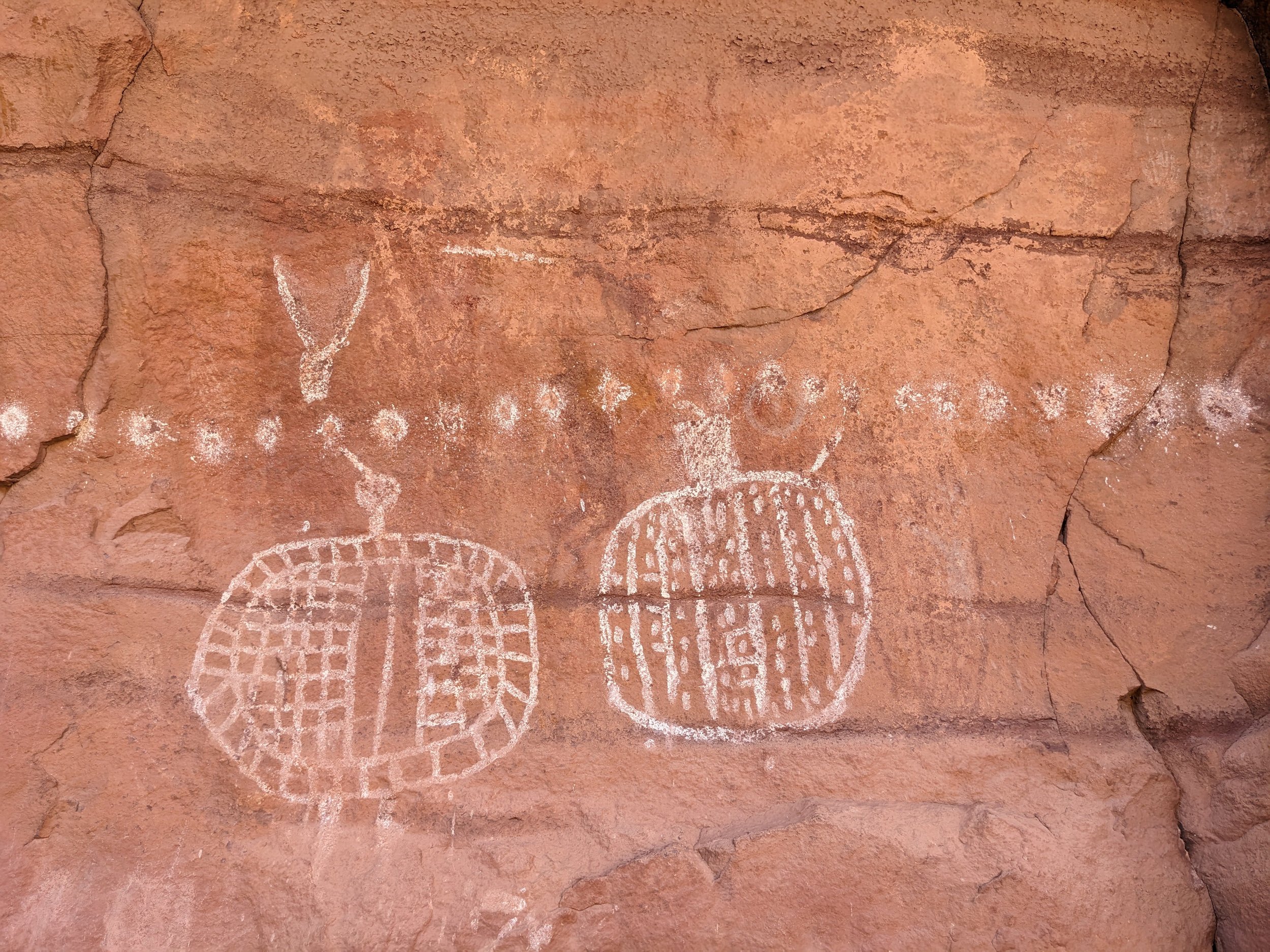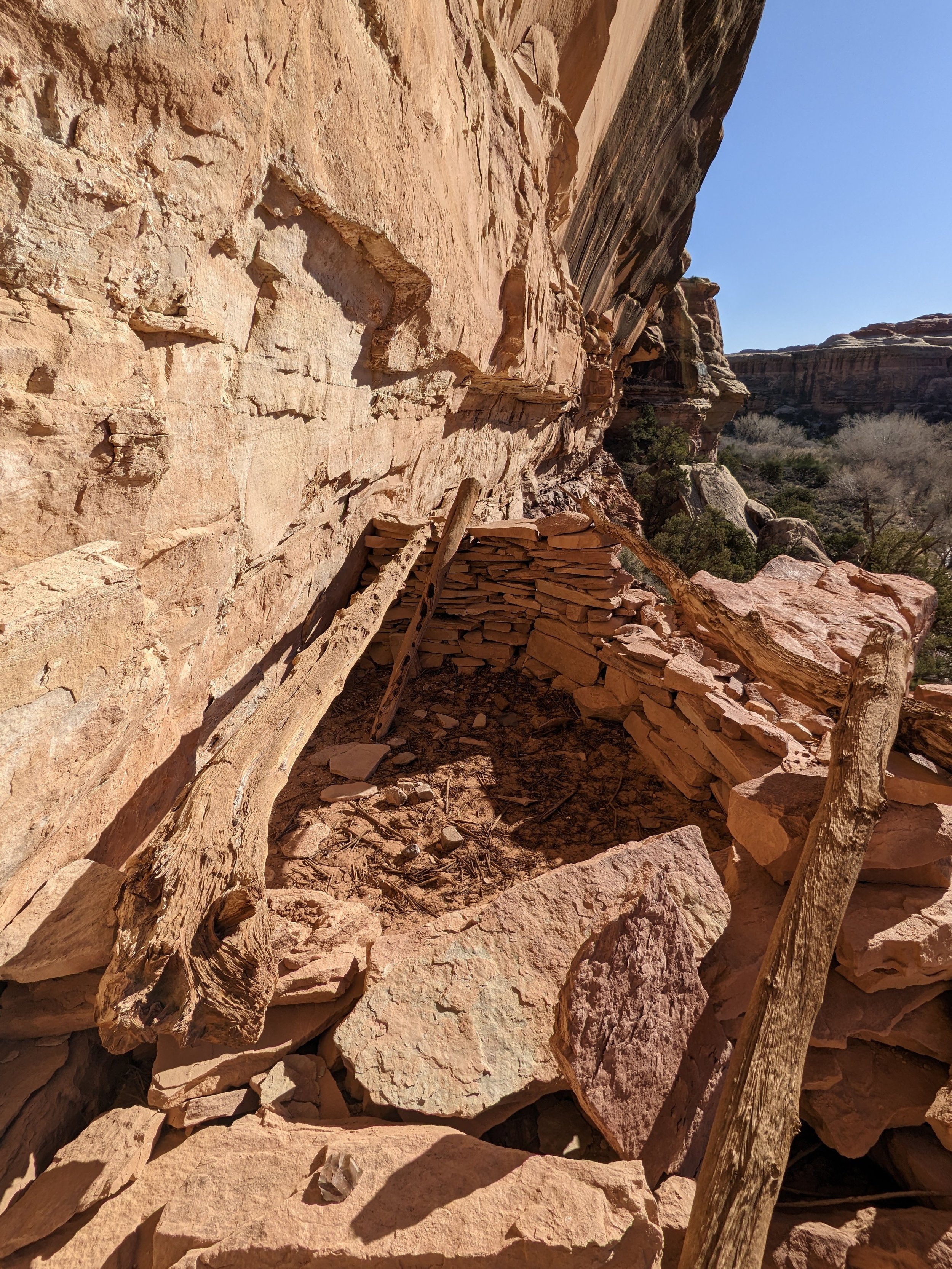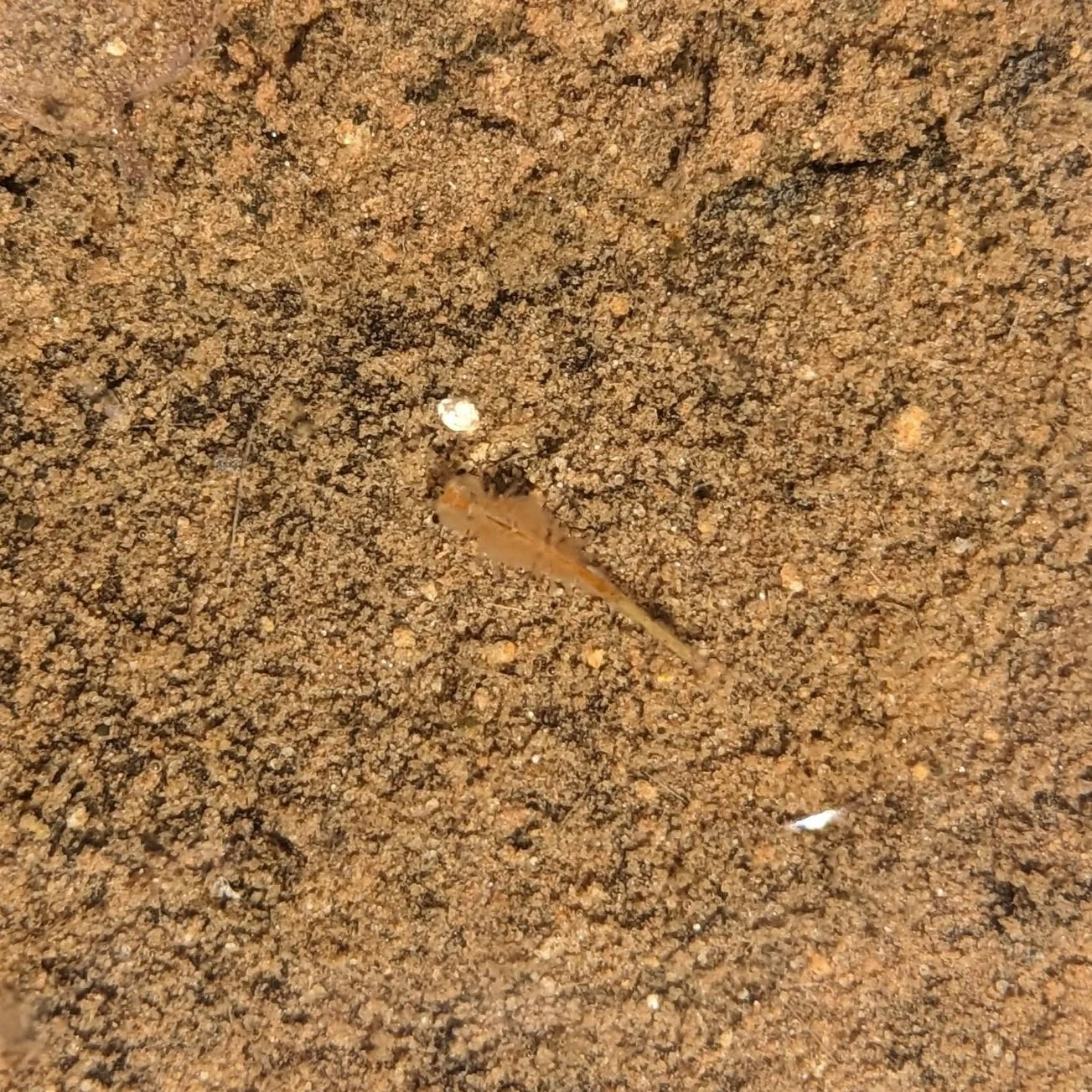Spring Break in Utah
For Spring Break 2023, I got permits for dispersed camping in the Salt Creek drainage of Canyonlands National Park. We’ve been to this area before and were astonished at the quantity of archeologic artifacts we found. For example, a place called Big Ruin is in the upper reaches of the creek and has pottery sherds, grinding stones, corn cobs, inaccessible cliff dwellings, and copious rock art. This time we started at the lower end of the creek with the intent of working our way up and into one of the smaller tributaries. We found the usual, magnificent Canyonlands rock formations, plus a lot of archeology.

Getting started per the usual

The first few miles were pretty boring dry creek but we did start to see rock art almost immediately, much of it high up on the clifftop panels.

The Peekaboo panel is well known but cool. Joe hypothesized that the marks are navigational aids, showing you where in the canyon you are…maybe.

Under the white turtles, we found older images of the classic alien-like warrior.

Further on. Some hand art.

More hand art at Spring Cave, which is accessible by car. We visited after returning.

This was the most amazing panel we found. It’s a bit hard to see in the picture, but this is depicts a person being struck by lightning! The sun above the clouds, rain falling around, and a bolt striking the person with their hands upraised. Wow.

Always some beautiful flowers in the desert.

Sunset in the canyon

Flint is everywhere and Joe and I tried a little knapping.

Resting on the climb to the rim

Pretty, folded sandstone

More rest.

Joe loves a cozy stone pocket.

The view from in a small cave.

Pano of one of many side canyons we explored.

Killing time while preping dinner.

Dead, but statuesque.

A little scramble up.

From the rim of another side canyon.

Foot washing in the ephemeral desert water.

But apparently not in short supply. We got about an inch of snow overnight.

Taking in a changed landscape.


Not lightning. Just hat hair.

It was pretty cold overnight. Those are some large icicles.

Passing into one of the larger side canyons. This area had a lot of land that would have been arable with a little more rainfall and the density of agricultural artifacts increased accordingly.

Past farmland on the elevated banks, right and left.

One of many notch explorations.

Some variety of puffball.

More snow. This area had no trail and lots of house sized boulders that we needed to walk over to find our way. Not eager to plunge off the side of a snowy rock, we turned back.

Working our way back.

Pano from the top of the bench.

The underbrush in the evening gloam.

We found dozens of structures, some for living, some for grain storage. Once I realized that they were almost always upslope on the south facing side of the canyon, I could spot them at almost every bend.

Many still had timbers.

This one seemed the most well preserved. Still has the door in place.

And when you look closely, you can see the fingerprints of the person who placed the clay mortar.

Looking carefully around the ruins, we began to find lots of tools and remnants of food processing. This is a small hand ax.

In many of the collapsed granaries, we found seed grass stalks.

An ancient corn cob. Much smaller than a modern variety.

Pot sherds. Plus, amazingly, we even found left over corn kernels!

Rock hopping

That, right in the middle, is a fairy shrimp or desert shrimp. They live their lifecycle in potholes that collect water when it rains. In the short time that the hole is full of water, they hatch, grow and mate (or fertilize their own eggs). Their eggs then desiccate and wait for the next rain, maybe years, even decades later. Pretty cool that we got to see them.

After eating freeze dried food for 7 days, a burger is very exciting.

But overwhelming. That right there is the face of instant regret.